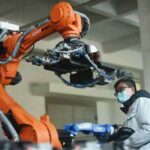Operating system used to remain a challenge for many industries.
For instance, financial institutions need their operating system to be extremely reliable as they
have to deal with a huge user base and complicated business forms.
The power industry, which sees a broad geographical coverage of its businesses and high
maintenance cost, must work to lower its cost and enhance safety while guaranteeing sound
information construction and high-quality system operation and maintenance.
Now, the OpenEuler, an open source operating system launched by Chinese tech giant Huawei, is
making the issue far less difficult.
Open source operating systems open and share their source codes, allowing anyone to carry out
secondary development of the systems based on the industries in which the systems are applied.
Huawei introduced The OpenEuler in September 2021, and its code, trademark, community
infrastructures and other assets were donated to the OpenAtom Foundation in November the same
year.
This has transformed the OpenEuler from an open source project led by its founding company into
one that’s co-constructed by the industry and shared by the community.
The rapid growth of the system is attributable to the continuous contribution made by the
members in the OpenEuler community, who are growing ever more diversified. So far, the
community has attracted nearly one million developers who established nearly 100 groups. The
system has been downloaded more than 470,000 times and the community joined by more than
330 enterprises, including chip manufacturers, operating system developers, and application
software suppliers. The OpenEuler community is becoming one the most dynamic communities in
the industry.
“The operating system is being applied in more and more industries, and a large batch of
outstanding open source software are merging,” said Ren Lin, a senior technical expert with the
information technology center under China Mobile, one of the three major telecommunications
carriers in China. He believes Huawei’s donation of the system to the Openatom Foundation will
further stimulate the innovation in the application of the system.
So far, the OpenEuler has been applied by government departments, financial institutes and
telecommunications carriers in a wide range of industries, such as energy, aerospace, logistics and
education. Numerous operating system developers have started developing commercial versions
of the system. China Mobile, together with its two major rivals in China – China Telecom and
China Unicom, have all developed their own versions of the OpenEuler.
According to a report on the Chinese operating system market, the OpenEuler saw the largest
market share expansion in the sectors of government and carrier affairs, and ranked first in terms
of market growth in its application in the financial industry.
Over one million sets of the operating system have been applied for commercial use, and another
two million are expected to be applied this year.
Besides, Huawei has launched a talent development acceleration plan under the guidance of
relevant department of the Chinese Ministry of Education, with an aim to encourage more
university students and teachers to join the operating system industry.
High school student Wu Qihan, a prize winner at the 2021 Kunpeng application innovation contest
held by Huawei, told People’s Daily that the contest enhanced his understanding of operating
system and improved his knowledge and technical capability.
Bai Zeping, a senior college student and a developer in the OpenEuler community, holds a similar
view. He said the Chinese environment and equal communication in the OpenEuler community
have brought developers closer to the community.
As the most basic and important software, operating system is the core and bedrock of a computer
system. Whether an operating system has a large developer base and whether it is massively
applied are of crucial importance to the system. As it is joined by more and more innovative
developers, the OpenEuler will offer stronger support for China’s digital infrastructure
construction in the future.



